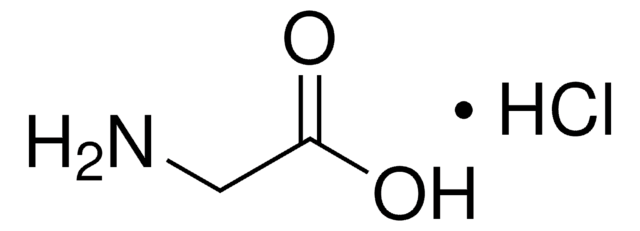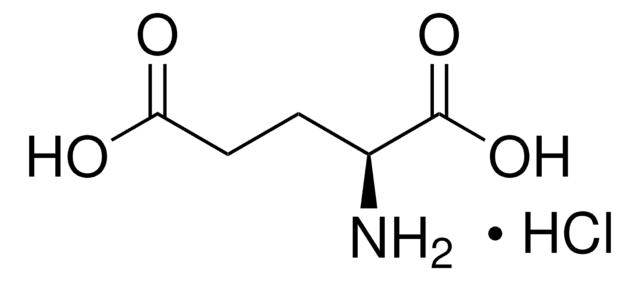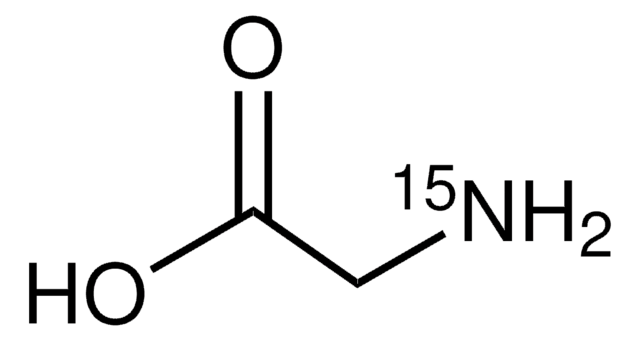G2879
Glycine hydrochloride
≥99% (HPLC)
Synonyme(s) :
Aminoacetic acid hydrochloride, Glycine HCl, Glycocoll hydrochloride, Aminoacetic acid, Aminoethanoic acid, Glycocoll
About This Item
Produits recommandés
Niveau de qualité
Pureté
≥99% (HPLC)
Forme
powder
Poids mol.
111.53
Conditions de stockage
(Tightly closed Dry)
Concentration
≤100%
Technique(s)
immunohistochemistry: suitable
Pf
176-180 °C (lit.)
Solubilité
water: 0.5 g/mL, clear, colorless
Température de stockage
room temp
Chaîne SMILES
Cl.NCC(O)=O
InChI
1S/C2H5NO2.ClH/c3-1-2(4)5;/h1,3H2,(H,4,5);1H
Clé InChI
IVLXQGJVBGMLRR-UHFFFAOYSA-N
Vous recherchez des produits similaires ? Visite Guide de comparaison des produits
Description générale
Application
- in the preparation of glycine-HCl buffer
- to elute serum immunoglobulins (IgGs) from the beads in order to check for the complete enrichment of core- and site-specific antibodies
- to regenerate the sensor to elute the bound C-reactive protein (CRP)
Actions biochimiques/physiologiques
Produit(s) apparenté(s)
Mention d'avertissement
Danger
Mentions de danger
Classification des risques
Eye Dam. 1 - Skin Corr. 1
Code de la classe de stockage
8A - Combustible corrosive hazardous materials
Classe de danger pour l'eau (WGK)
WGK 1
Point d'éclair (°F)
Not applicable
Point d'éclair (°C)
Not applicable
Équipement de protection individuelle
Eyeshields, Gloves, type N95 (US)
Certificats d'analyse (COA)
Recherchez un Certificats d'analyse (COA) en saisissant le numéro de lot du produit. Les numéros de lot figurent sur l'étiquette du produit après les mots "Lot" ou "Batch".
Déjà en possession de ce produit ?
Retrouvez la documentation relative aux produits que vous avez récemment achetés dans la Bibliothèque de documents.
Les clients ont également consulté
Protocoles
This page shows and discusses three protocols for stripping and reprobing a western blot membrane.
Notre équipe de scientifiques dispose d'une expérience dans tous les secteurs de la recherche, notamment en sciences de la vie, science des matériaux, synthèse chimique, chromatographie, analyse et dans de nombreux autres domaines..
Contacter notre Service technique








